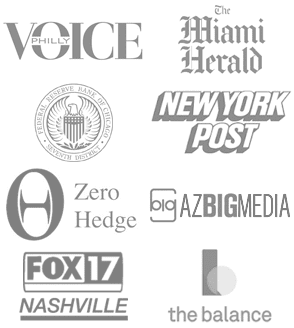In the volatile economic landscape of 2025, tariffs have emerged as a pivotal policy tool under the Trump administration, sparking intense debate about their ripple effects across various sectors. As of September 11, 2025, with recent tariff implementations on imports from key trading partners like China and Mexico, questions abound regarding their influence on everyday finances, particularly mortgage rates. Mortgage interest rates, which dictate the cost of homeownership for millions, are currently averaging around 6.5% for a 30-year fixed loan, down from peaks earlier in the year. While tariffs are often criticized for stoking inflation and potentially hiking borrowing costs, there’s a nuanced counterargument: under certain conditions, they could actually help lower mortgage rates. The RefiGuide published this article to explore the multifaceted relationship between tariffs and mortgage rates, considering into economic mechanisms, short- and long-term impacts, and real-world examples from recent events.
Understanding Tariffs and Their Economic Role with Mortgage Rates

Tariffs are essentially taxes imposed on imported goods to protect domestic industries, reduce trade deficits, or retaliate against unfair trade practices. In 2025, the U.S. has enacted broad tariffs, including a 10% universal rate on all imports and up to 145% on specific Chinese goods, aiming to bolster American manufacturing. Proponents argue these measures can stimulate local production and job creation, but critics warn of higher consumer prices and disrupted global supply chains.
Economically, tariffs function as a double-edged sword. They increase the cost of foreign products, which can lead to higher prices for consumers and businesses alike. This cost-push inflation might erode purchasing power and slow economic growth if demand weakens. On the flip side, by encouraging domestic investment, tariffs could foster long-term resilience. However, their immediate effects often manifest in market volatility, influencing everything from stock prices to bond yields.
How Mortgage Rates Are Determined
To grasp tariffs’ potential impact, it’s essential to understand mortgage rate dynamics. Mortgage rates aren’t set arbitrarily; they closely track the yield on the 10-year U.S. Treasury bond, which serves as a benchmark for long-term borrowing costs. Typically, 30-year fixed mortgage rates hover 1.7 to 2 percentage points above this yield. Factors like inflation expectations, Federal Reserve policies, economic growth, and investor sentiment play key roles.
The Federal Reserve influences short-term rates through its federal funds rate, but long-term rates like those for mortgages are more market-driven. When investors anticipate economic turbulence, they flock to safe-haven assets like Treasuries, driving up bond prices and lowering yields—and, by extension, mortgage rates. Conversely, rising inflation prompts higher yields as investors demand compensation for diminished purchasing power.
The Inflationary Pressure: How Tariffs Could Raise Mortgage Rates
The predominant view among economists is that tariffs are inflationary, which could push mortgage rates upward in the long run. By taxing imports, tariffs raise the price of goods ranging from electronics to building materials. For instance, the National Association of Home Builders estimates that 2025 tariffs could increase new-home construction costs by an average of $9,200, as imported lumber, steel, and appliances become pricier. This not only boosts home prices—already up 4% nationally this year—but also contributes to broader inflation, potentially reaching 3.5% to 4% by year-end.
Higher inflation erodes the value of fixed-income investments like bonds, leading investors to sell Treasuries and demand higher yields. If the Fed responds by hiking rates to curb inflation, mortgage rates follow suit. A Cotality study highlights that existing tariffs could elevate new-home costs by 4% to 6%, affecting nearly half of available inventory and requiring homebuyers to earn nearly $117,000 annually to afford a typical $398,400 home. In April 2025, following tariff announcements, rates initially climbed to 6.83% amid uncertainty, illustrating this upward pressure.
Moreover, tariffs can exacerbate trade tensions, leading to retaliatory measures from partners, further disrupting supply chains and amplifying inflationary effects. Economists like Mike Fratantoni from the Mortgage Bankers Association describe this as a “cloud on the housing market,” potentially deterring buyers and slowing the sector.
How Tariffs Could Help Lower Mortgage Rates
Despite the inflationary risks, tariffs can paradoxically contribute to lower mortgage rates, particularly in the short term, through mechanisms rooted in economic uncertainty and slowdowns. This counterintuitive effect has been evident in 2025’s market reactions.
First, tariff announcements often trigger immediate market volatility, prompting a flight to safety. Investors sell stocks and buy bonds, increasing demand for Treasuries and lowering yields. Melissa Cohn, regional vice president at William Raveis Mortgage, encapsulates this: “What’s bad for the economy is good for mortgage rates.” Following the April 2025 tariff rollout, the 10-year Treasury yield plummeted from 4.19% to 4.03%, causing 30-year fixed rates to drop 12 basis points to 6.63%—the lowest since October. This bond rally created a “window of opportunity” for borrowers, boosting home purchase applications as per the Mortgage Bankers Association.
Second, if tariffs weaken overall economic growth—by raising costs, reducing consumer spending, and straining trade relationships—they can lead to a softer jobs market and lower inflation pressures over time. In 2025, tariffs have contributed to a “very weak jobs market” with unemployment nearing four-year highs, prompting markets to anticipate Federal Reserve rate cuts. As of September, there’s an 89.8% probability of a 25-basis-point cut on September 17, which could stabilize or further reduce mortgage rates. A Reddit discussion in AskEconomics explains that rates dropped post-announcement because markets priced in more aggressive Fed cuts, expecting tariffs to induce stagflation or recession, lowering the expected path of the federal funds rate and dragging down SOFR-linked yields.
Third, in a broader sense, tariffs might reduce long-term interest rates by curbing excessive economic overheating. If they successfully narrow trade deficits—potentially by influencing capital flows and exchange rates—they could strengthen the dollar and ease imported inflation, indirectly supporting lower rates. For variable-rate mortgages like ARMs or HELOCs, central bank cuts in response to slowdowns directly translate to savings. As noted in a Capital Zone analysis, “If tariffs weaken the economy, central banks may cut rates to stimulate growth, lowering variable mortgage rates.”
These lowering effects are most pronounced in the near term or during economic transitions, offering relief to homebuyers amid high housing costs, where monthly payments hit a record $2,802 in early 2025.
Case Study 1: Short-Term Bond Rally Benefits Buyers In early April, following the announcement of escalated tariffs on China, stock markets sold off sharply, driving investors to Treasuries. Mortgage rates tumbled from 6.75% to 6.63% within days, enabling a surge in refinancing and purchases. One borrower in California, facing a $500,000 loan, saved approximately $150 monthly by locking in the dip, highlighting how uncertainty can create borrowing windows despite long-term risks.
Case Study 2: Economic Slowdown and Fed Response By mid-2025, tariffs contributed to weaker job growth, with unemployment rising. This prompted markets to bet on Fed cuts, sliding rates further. In Texas, manufacturers reported “tariff bingo” uncertainty delaying investments, but homebuyers benefited from rates dropping to 6.5%, making a median $460,000 new home more affordable for those earning around $100,000—though inflation offset some gains.
Case Study 3: Long-Term Trade Adjustments In regions like the Midwest, tariffs aimed at protecting steel industries led to initial rate drops as global trade fears mounted. However, as inflation crept up, rates stabilized higher. A family in Ohio refinanced their $300,000 mortgage from 7% to 6.4% in spring, saving $200 monthly, but faced higher home improvement costs due to pricier imports, illustrating the trade-off.
Tariffs’ impact on mortgage rates is complex and context-dependent. While they risk inflating costs and elevating rates long-term—potentially to 7% or more if inflation spirals—they can help lower rates through short-term uncertainty-driven bond rallies, economic slowdowns prompting Fed cuts, and adjusted market expectations. In 2025, we’ve seen rates dip to 6.5% amid tariff turbulence, offering opportunities for savvy borrowers, but at the expense of broader economic strain. Homebuyers should monitor Fed actions and consult advisors, as the balance between protectionism and affordability remains precarious. Ultimately, while tariffs may provide temporary rate relief, sustainable lower rates hinge on controlled inflation and robust growth.
